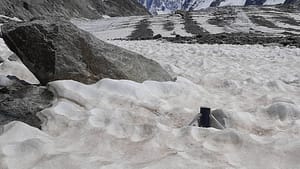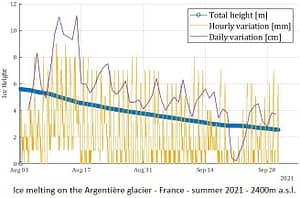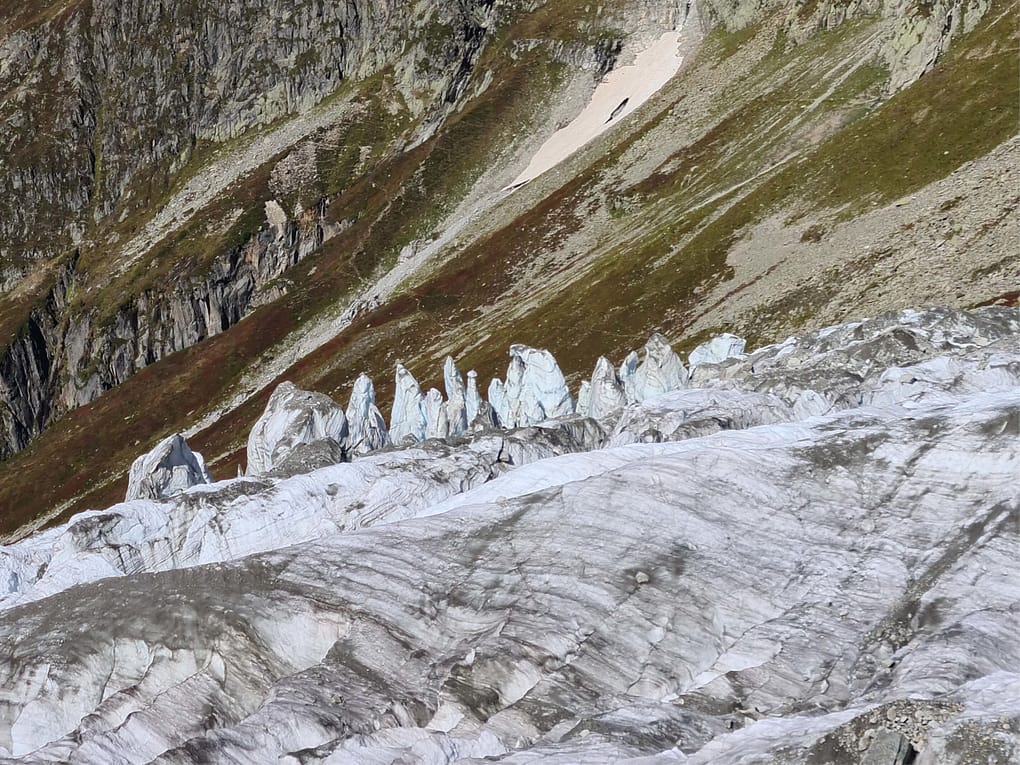For a hundred years, glaciology researchers have been studying glaciers across the planet to follow their evolution, understand their dynamics and quantify their mass balance. Today, more than 150 glaciers worldwide are being monitored under the patronage of the World Glacier Monitoring Service (WGMS). Over the last few decades, the retreat of glaciers has dramatically accelerated. It is now acknowledged as a strong indicator of the climate change. Measuring glacier melting has therefore gained more and more prominence for assessing the ice mass loss.
This article aims at giving an overview of the most significant onsite methods used by glaciologists to measure glacier melting. A particular emphasis will be placed on the very good results obtained over the last 3 years with the SmartStake station dedicated to the continuous measurement of glacier melting. This latter work has been achieved by A2 Photonic Sensors in close collaboration with the French Institute of Environmental Geosciences (CNRS/IGE).
Beyond the wooden stick: some new technologies bring solutions to measure glacier melting minute by minute

In 2004, Bøggild et al. developed their “Bøggild ablatometer” based on the variation of hydrostatic pressure as the ice surface melts. In 2010, John Hulth developed a clever and direct draw-wire method. More recently, methods based on pressure transducers (Bøggild et al. again in 2017), on thermistor strings (Carturan et al., 2019) and on light sensors (Ialongo et al., 2021) have been developed and tested. For low melting rates or for short occasional measurement campaigns, one can also go with LIDAR or ultrasonic time of flight depth sensors, more often used for snow depth measurements.
All these modern methods are both valuable and relevant and can be discussed in terms of performance, reliability and cost but they all remain research prototypes and, as such, are not easily accessible to the entire glaciology research community. In order to fill this lack of widely available solution, and to provide a solid technical support and maintenance service, the Institute of Environmental Geosciences and A2 Photonic Sensors have developed the SmartStake autonomous station to continuously measure glacier melting with a millimetric precision and a minute resolution.
The SmartStake ice melting monitoring station

By default, the ice melting measurement is scheduled every 30 minutes, which is usually found sufficient to precisely monitor the melting 24 hours a day. Meanwhile, this time step can be adjusted from 1 minute to several hours if necessary.
To strengthen its analysis capabilities, the SmartStake station is equipped with an external temperature sensor as well as with a snowfall detector allowing for instance the correlation of the melting interruptions with the presence of fresh snow on the glacier surface. When the glacier is covered by the LoRa network, data can be transmitted in real time and the monitoring can be done from the comfort of your desk. As an illustration, see the online dashboard of our Argentière glacier station. To be honest however, few glaciers have a LoRa coverage strong enough for this purpose. That’s why SmartStake will be embedding a satellite communication feature in the course of 2022, enabling the dissemination of the solution all over the world.
learn more about the smartstake stationCan an electronic device be as reliable as a robust wooden stake for ice ablation measurement?


Last but not least, after 3 years in the field and the deployment of 4 SmartStake stations, no damage was reported, even during summer/winter cycles, and results are in keeping with the expectations.
SmartStake and the output of these experiments will be presented at the EGU General Assembly 2022 (May 23-27, 2022). If you cannot attend, please feel free to contact us – we will be happy to discuss your project.
Contact us

